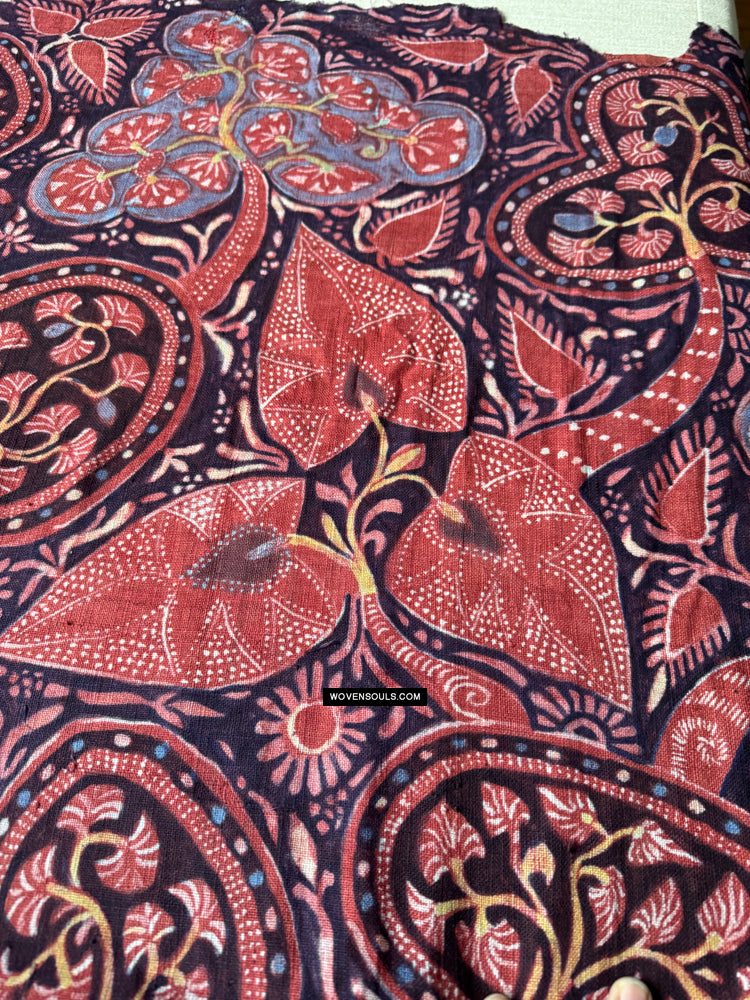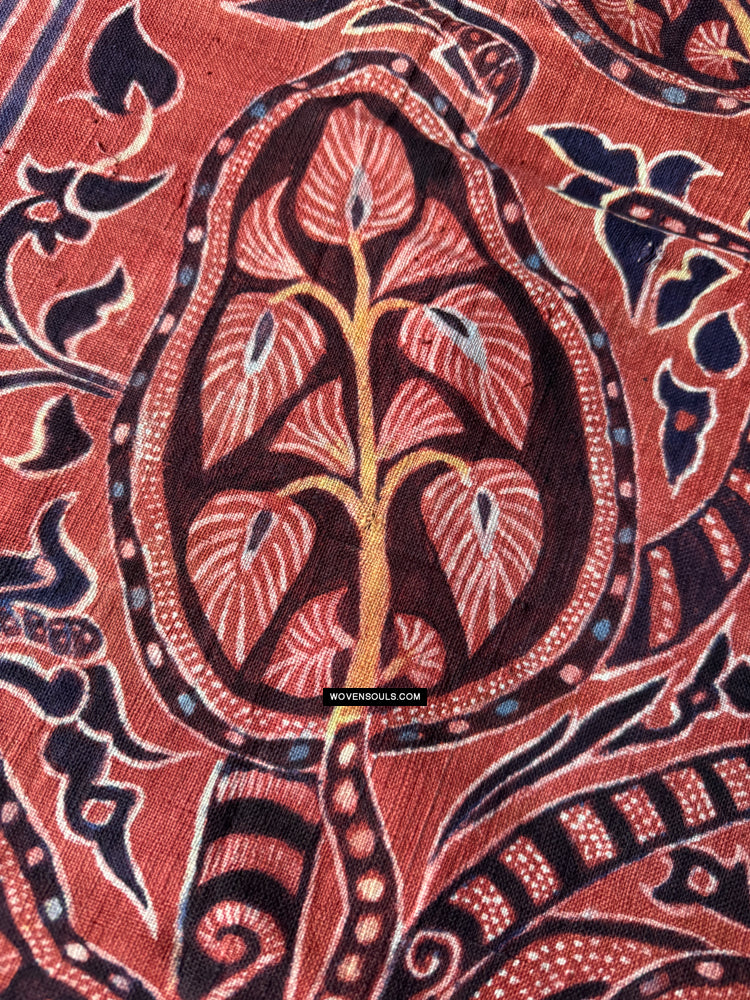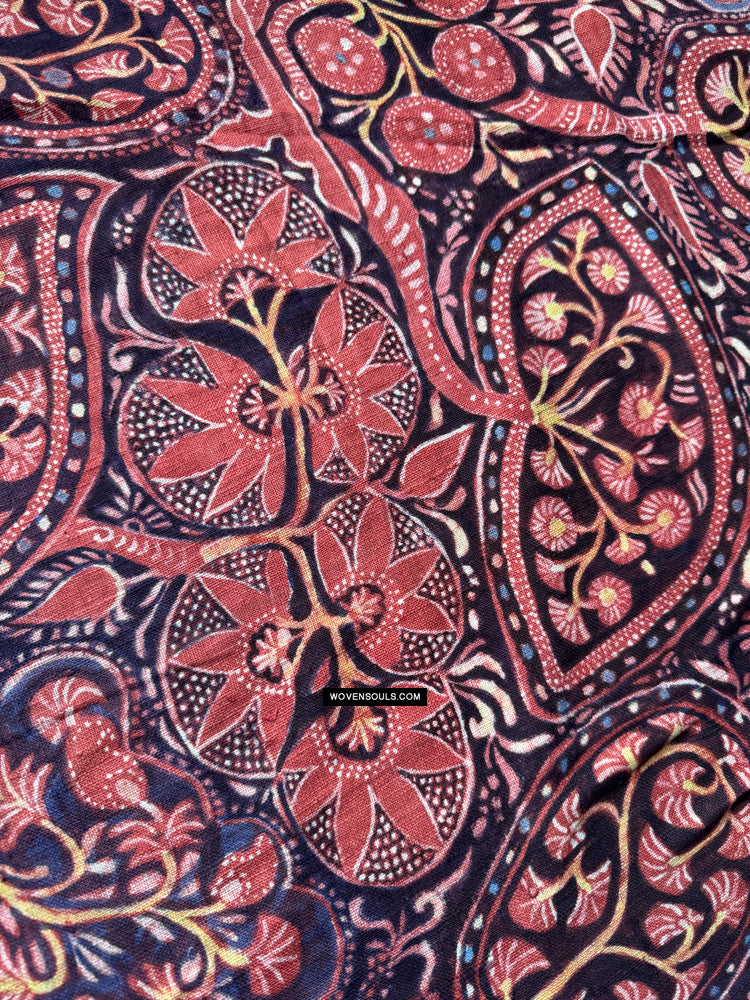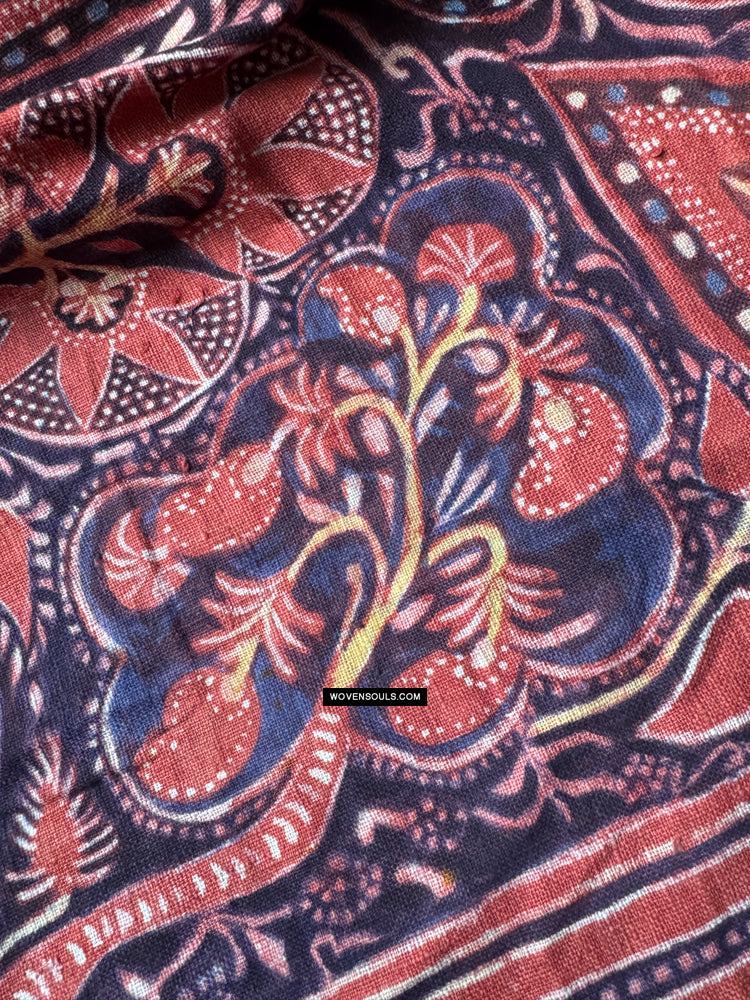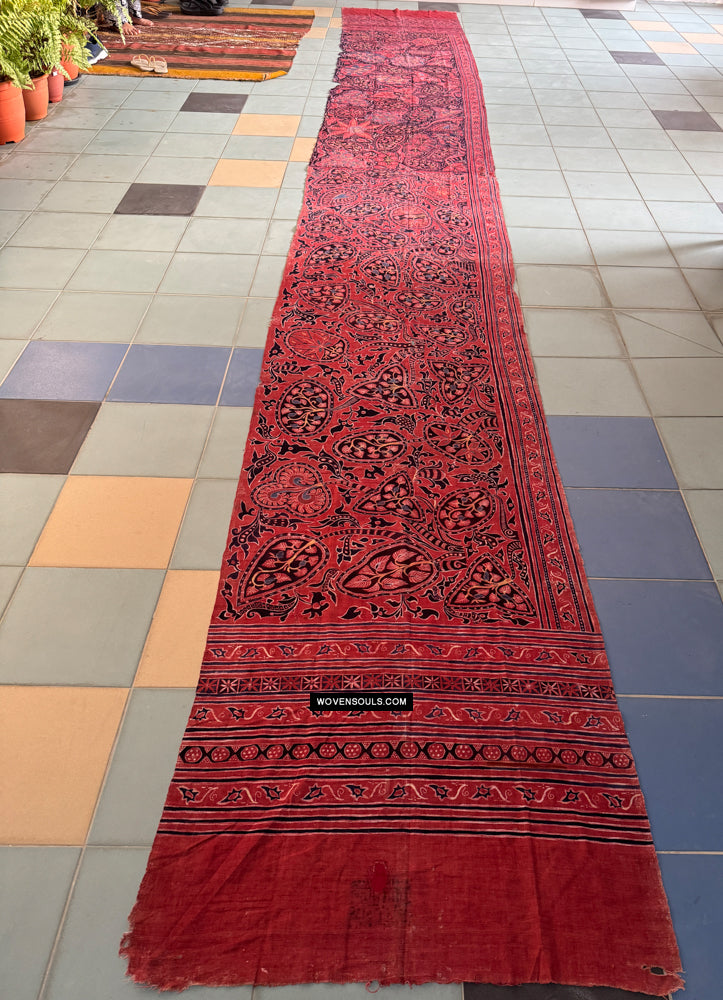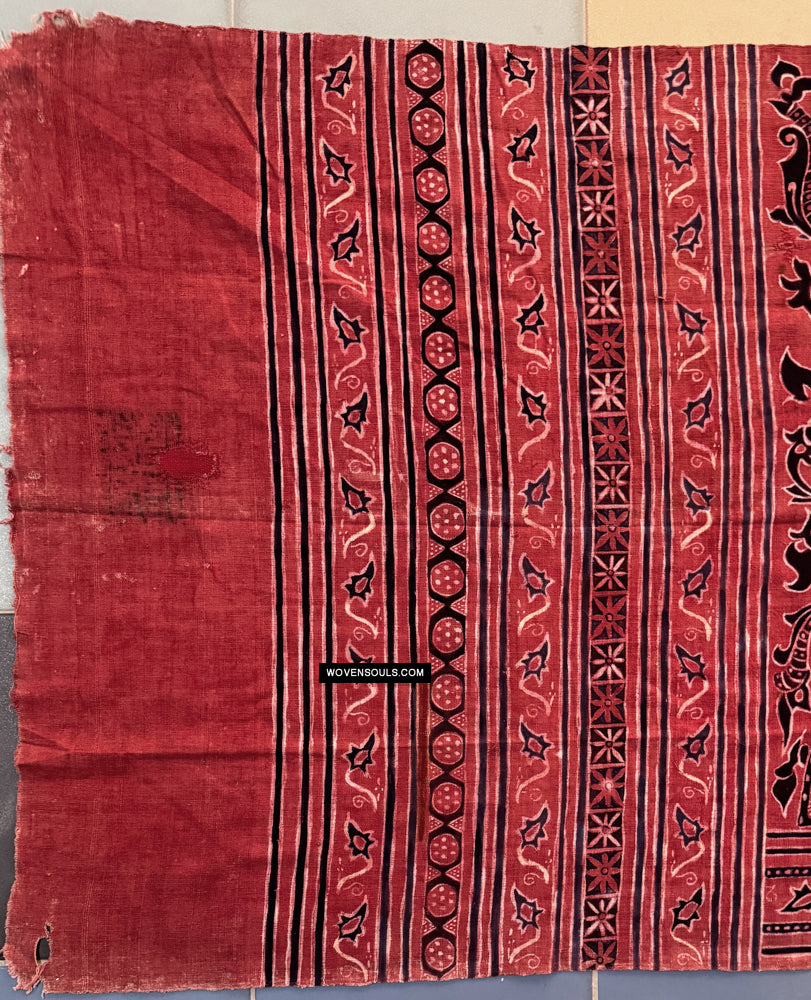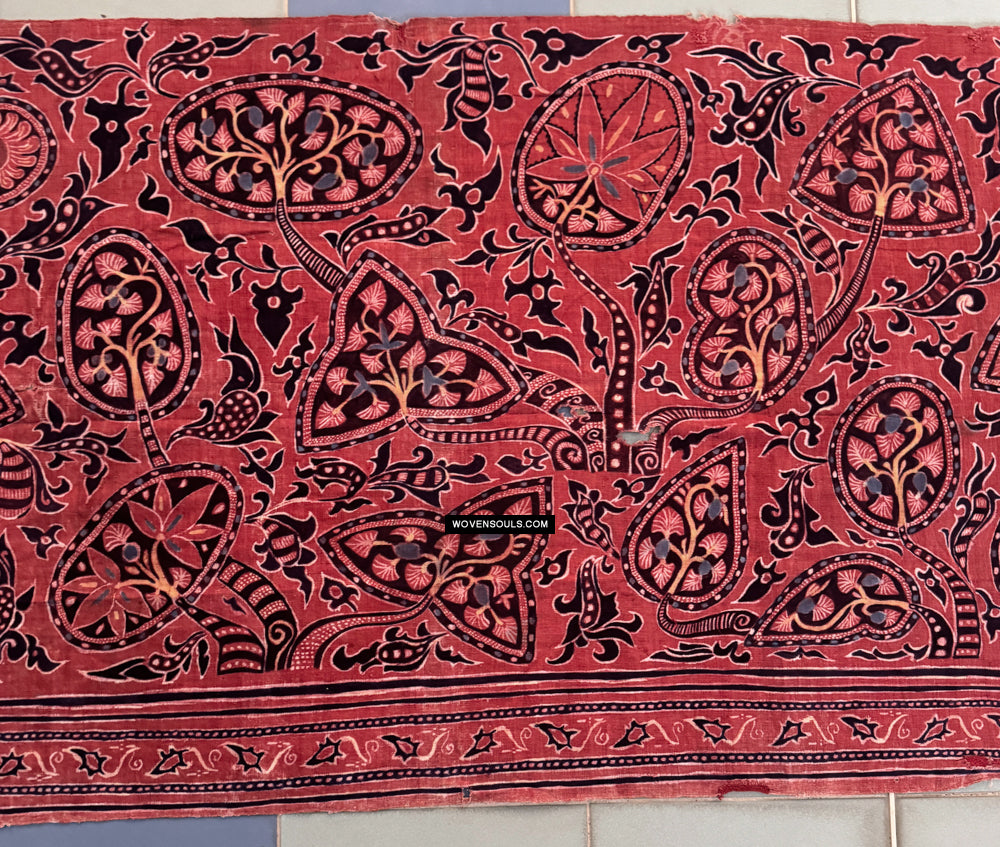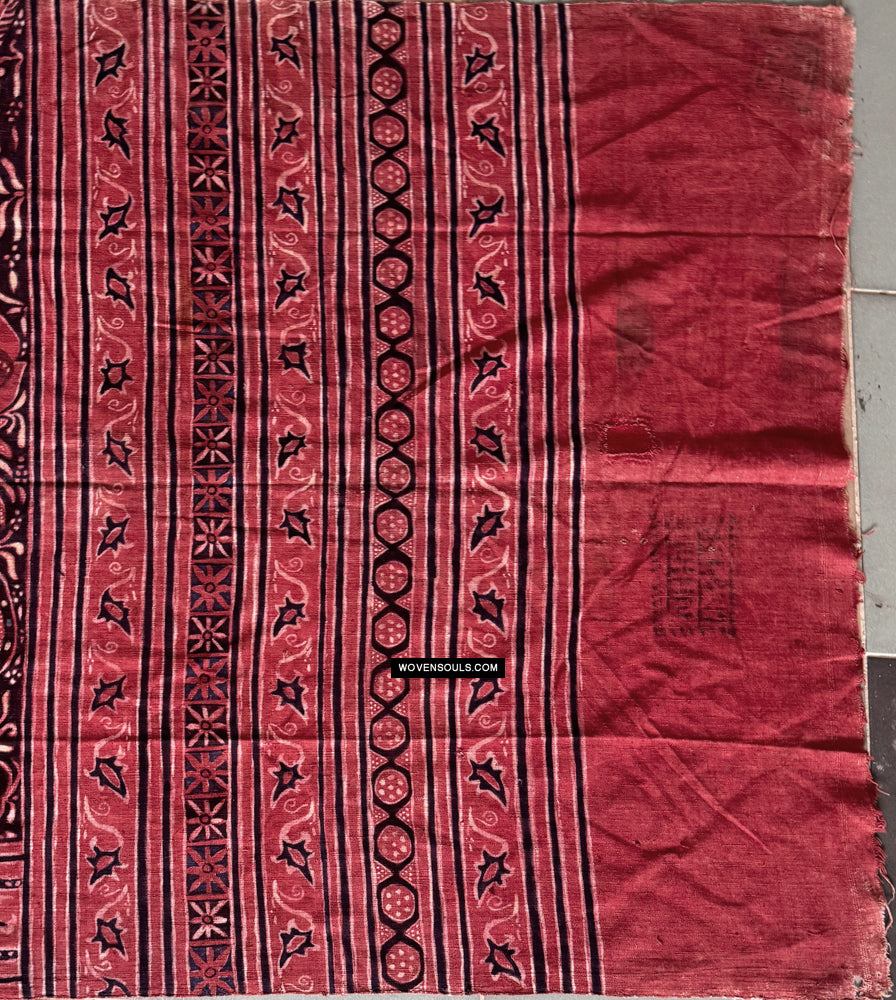1987 SOLD Complete Antique Indian Trade Textile / Indonesian Cloth Pohon Bolu
Complete Antique Indian Trade Textile / Indonesian Cloth Pohon Bolu
A gorgeous long ceremonial cloth with Kalamkari (also known as Sarasa) that is completely hand-drawn.
Such Indian Trade textiles were made for the Toraja / Indonesian market to be used as ceremonial textiles
The design is the "Pohon Daun Bolu" (Sponge Tree Leaves) design. These trees enjoy a special place in the social fabric of Toraja as they are used to welcome guests traditionally in the mega ceremonies.
Amazing brown & red background.
Noteworthy use of white, light blue and yellow
Note the printed trademark stamp on the cloth.
Coarse cotton cloth.
Has several superbly-done old repairs
Also has a few holes and damage especially along one edge.
Note that the character of the left half of this textile is different from the right half of the textile. The background of the left half is red whereas the right is brown and the background on the left has fewer filler elements compared to the right half. There is a clear line demarcating the halves.
Excerpt from the Asian Art Newspaper describing a similar textile from the ACM Singapore: [Link https://asianartnewspaper.com/indian-textiles-in-southeast-asia/]
"An example of an early textile from Gujarat in the gallery is a ceremonial cloth with a betel-leaf design (daun bolu) and dates to 14th to 16th century. This long textile is divided into two halves, one with a denser pattern than the other – sometimes called a pagi sore, meaning night/day. Only one edge has a border, suggesting that it was designed to be cut in two and joined together to produce a square. Both halves are decorated with stylised flowering trees, or daun bolu. Cloths like this were popular in eastern Indonesia, especially in Toraja, Sulawesi. They were used as hangings in house building and harvest ceremonies. Cloths with similar designs dated to the 14th century have been found in Egypt."
EXCEPTIONAL LENGTH: Over six meters long
625 x 85 cm
For similar examples
1) Asian Civilsations Museum Singapore: Link
2) The Tapi collection Link
3) 'Master Dyers to the World' by Mattiebelle Gittinger
Similar examples have been dated to be from the 13th - 19th century. Asset 1987 is younger and estimated to be from the early 1900s or late 1800s.
Please see the TALK that explores the "Ceremonial Use of Traditional Textiles in Toraja" that shows the use of textiles in the living traditions today. The talk explains the presence of textile arts across the continuum of time in Toraja.
VERY RARE
See the complete 'Indian Trade Textiles for Toraja' collection
ENJOY THE INTRODUCTORY PRICE




